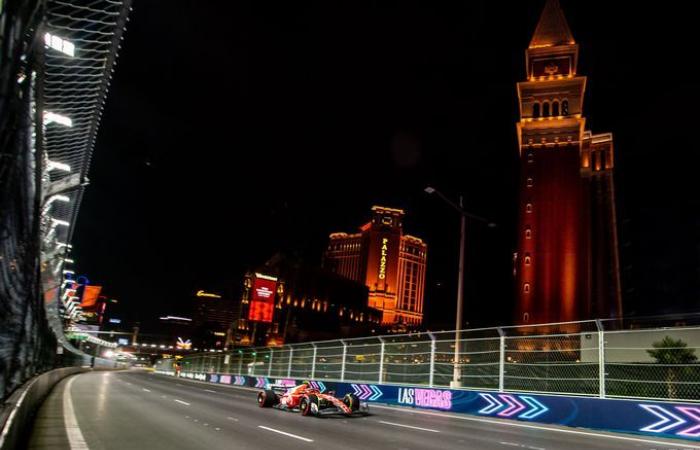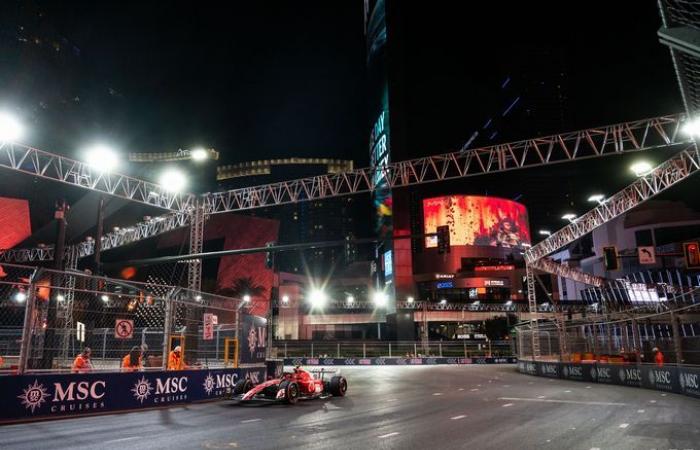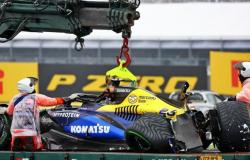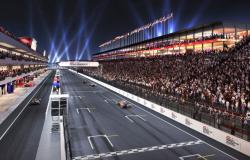Ferrari is preparing for one of the most unusual races on the F1 calendar, the Las Vegas Grand Prix, this weekend in Nevada. Erik van der Veen, engineer responsible for the Maranello simulator, detailed the challenges awaiting the Scuderia.
“Las Vegas is one of those tracks that may seem easy at first glance, but it's actually very difficult for a variety of reasons. There are only five sets of corners.” Van der Veen said.
“But they are all low speed with large braking zones, and what's more, some corners are blind. The large braking zones have to be timed to perfection, even when traveling at over 340 km/h. “
“It requires a lot of downforce to give the confidence to slow the car down and then go in and out of those corners as quickly as possible. On the other hand, as soon as you come out of those corners, there are long straight lines which require low drag and therefore a low downforce configuration.”
“Then, once again, at the end of these straights there are these big braking zones, but by that time the brakes and tires have cooled down from not being used for the whole straight , which adds another level of difficulty for the pilots to manage.”
“All this on a street circuit where the walls are very close together, leaving no margin for error. Las Vegas is in a desert and the event takes place at night.”
“This means that temperatures drop very quickly, sometimes even below 10 degrees Celsius, making it difficult to get the tires in the correct window for a simple push lap, and equally difficult to keep them in the window for long runs.”
“This is made all the more difficult because the long straights allow the tires to cool quickly, which poses problems for drivers and teams that they do not encounter on any other circuit.”
In 2023, “the simulator was based on drawings”
The simulator was crucial in preparing for this race, and van der Veen explains the difference between 2023 and 2024, with a year's experience: “If we compare what we knew last year to what we know this year, the situation has completely changed.”
“While last year the track model used in the simulator was based on drawings, this year we have a complete representation of the track, the asphalt and its surroundings.”
“Also, since we also have all the data from last year, we can predict much more accurately what will happen at this year's Las Vegas GP.”
“This means that the engineers and development drivers, but also Carlos and Charles themselves, have a much better opportunity to prepare for the weekend, to familiarize themselves with the track and the car settings.”
“As with every race, Charles and Carlos have been in the simulator before the race, working on optimizing their driving and car settings to ensure we have the best possible starting point, as well as being ready in case conditions are different from what we expect.”
“This is precisely where the simulator is an extremely powerful tool and the preparation sessions are very useful in allowing drivers to optimize their driving style for a specific circuit.”
The importance of simulator pilot
Despite the important learning that Las Vegas represents, Ferrari prepares this race like the others, with in-depth work from the simulator driver and different weather simulations: “The approach is no different to that taken for any other event, although the circuit is unique in its kind.”
“The development driver in the simulator will have been briefed in preparation for the weekend on the importance of optimizing each corner, given that there are very few corner sequences where drivers can make a difference.
“It is essential for drivers on the circuit to have a car that allows them to have the confidence to push the car to the limit without going over it, because the corners are tight and without visibility.
“The simulator driver therefore devotes a lot of his attention to the balance and driving style in these corners, sometimes going so far as to exceed the limit and hit the walls, fortunately, on the simulator, the damage is not not real.”
“During a typical session where we assist the team on track, we use the laps performed during the free practice sessions and replicate the exact same conditions, car settings and driving on the simulator. “
“This allows us to identify the strengths and weaknesses of the car and try to improve them in order to give feedback to the team on track who can then adjust the car accordingly.”
“We also use these sessions to explore what to expect if the weather changes over the weekend – for example, temperatures, wind direction and intensity may be different from day to day. the other or can even change during a single session.”
“By replicating these weather conditions in the simulator, we can tell drivers what to expect to allow them to get the most out of the car before they even hit the track.”







